Cisco Systems 509G User Manual

USER GUIDE
Cisco Small Business Pro
SPA 500 Series IP Phones
Models 501G, 502G, 504G, 508G, and 509G

CCDE, CCENT, CCSI, Cisco Eos, Cisco HealthPresence, Cisco IronPort, the Cisco logo, Cisco Lumin, Cisco Nexus, Cisco Nurse Connect, Cisco Pulse, Cisco StackPower, Cisco StadiumVision, Cisco TelePresence, Cisco Unified Computing System, Cisco WebEx, DCE, Flip Channels, Flip for Good, Flip Mino, Flipshare (Design), Flip Ultra, Flip Video, Flip Video (Design), Instant Broadband, and Welcome to the Human Network are trademarks; Changing the Way We Work, Live, Play, and Learn, Cisco Capital, Cisco Capital (Design), Cisco:Financed (Stylized), Cisco Store, and Flip Gift Card are service marks; and Access Registrar, Aironet, AllTouch, AsyncOS, Bringing the Meeting To You, Catalyst, CCDA, CCDP, CCIE, CCIP, CCNA, CCNP, CCSP, CCVP, Cisco, the Cisco Certified Internetwork Expert logo, Cisco IOS, Cisco Press, Cisco Systems, Cisco Systems Capital, the Cisco Systems logo, Cisco Unity, Collaboration Without Limitation, Continuum, EtherFast, EtherSwitch, Event Center, Explorer, Fast Step, Follow Me Browsing, FormShare, GainMaker, GigaDrive, HomeLink, iLYNX, Internet Quotient, IOS, iPhone, iQuick Study, IronPort, the IronPort logo, Laser Link, LightStream, Linksys, MediaTone, MeetingPlace, MeetingPlace Chime Sound, MGX, Networkers, Networking Academy, Network Registrar, PCNow, PIX, PowerKEY, PowerPanels, PowerTV, PowerTV (Design), PowerVu, Prisma, ProConnect, ROSA, ScriptShare, SenderBase, SMARTnet, Spectrum Expert, StackWise, The Fastest Way to Increase Your Internet Quotient, TransPath, WebEx, and the WebEx logo are registered trademarks of Cisco Systems, Inc. and/or its affiliates in the United States and certain other countries.
All other trademarks mentioned in this document or website are the property of their respective owners. The use of the word partner does not imply a partnership relationship between Cisco and any other company. (0908R)
© 2009 Cisco Systems, Inc. All rights reserved. |
OL-19750-02 |

Contents
Chapter 1: Getting Started |
1 |
About This Document |
1 |
Overview of the Cisco Small Business Pro IP Phones |
3 |
Understanding Your Phone’s Lines and Buttons |
4 |
Phone Components |
4 |
Softkey Buttons |
6 |
Using Keypad Shortcuts |
8 |
Cisco SPA 500S Attendant Console |
9 |
Caring for Your Phone |
10 |
Chapter 2: Installing Your Phone |
11 |
Before You Begin |
12 |
Phone Connections |
12 |
Connecting the Handset |
13 |
Installing the Stand (Optional) |
13 |
Mounting the Phone to the Wall (Optional) |
14 |
Reversing the Handset Retention Tab |
18 |
Connecting the Power |
19 |
Connecting Your Phone to the Network |
20 |
Connecting the Phone to the Wireless Network |
20 |
Connecting a PC to Your Phone (Optional) |
21 |
Connecting Wired and Wireless Headsets (Optional) |
21 |
Verifying Phone Startup |
22 |
Upgrading Your Phone’s Firmware |
23 |
Determining Your Current Firmware Version |
23 |
Download the Firmware |
24 |
Get Your Phone’s IP Address |
24 |
Install the Firmware |
25 |
Cisco Small Business Pro IP Phone SPA 50X User Guide (SIP) |
i |

Contents
Chapter 3: Using Basic Phone Functions |
26 |
Using Phone Hardware and Accessories |
27 |
Using the Speakerphone |
27 |
Using the Headset with Your IP Phone |
27 |
Switching Between the Handset/Headset/Speakerphone During a Call |
27 |
Sending Audio to the Phone Speaker |
27 |
Choosing Your Preferred Audio Device |
28 |
Adjusting Call Volume and Muting |
29 |
Adjusting Call Volume |
29 |
Adjusting the Ringer Volume |
29 |
Using Mute |
29 |
Placing or Answering a Call |
29 |
Using Dial Assistance |
30 |
Putting a Call on Hold |
30 |
Resuming a Call |
31 |
Ending a Call |
31 |
Transferring Calls |
31 |
Performing an Attended Transfer |
32 |
Performing an Unattended (Blind) Transfer |
32 |
Transferring a Held Call to an Active Call |
33 |
Redialing |
33 |
Viewing and Returning Missed Calls |
34 |
Turning the Missed Calls Shortcut On and Off |
35 |
Forwarding Calls |
35 |
Forwarding All Calls |
36 |
Forwarding Calls When Your Phone is Busy |
36 |
Forwarding Calls When You Don’t Answer the Phone |
37 |
Delaying Call Forwarding When You Don’t Answer the Phone |
37 |
Stopping Call Forwarding |
38 |
Cisco Small Business Pro IP Phone SPA 50X User Guide (SIP) |
ii |
|
Contents |
|
|
Setting Do Not Disturb |
38 |
Activating Do Not Disturb |
38 |
Deactivating Do Not Disturb |
39 |
Turning Call Waiting On and Off |
39 |
Picking Up a Call |
40 |
Parking a Call |
41 |
Placing a Three-Way Conference Call |
42 |
Conferencing a Held Call with an Active Call |
43 |
Using the Phone Directories |
44 |
Using Your Personal Directory |
44 |
Using the Corporate Directory |
45 |
Using the Call History Lists |
46 |
Viewing the Call History Lists |
46 |
Calling from the Call History Lists |
47 |
Deleting a Number from the Call History Lists |
47 |
Saving a Call History List Number to Your Directory |
47 |
Setting or Changing a Phone Password |
48 |
Accessing Voicemail |
48 |
Chapter 4: Using Advanced Phone Features |
49 |
Configuring Privacy and Security Features |
50 |
Blocking Caller ID |
50 |
Blocking Anonymous Calls |
50 |
Using Secure Call |
51 |
Enabling Dial Assistance |
52 |
Creating Speed Dials |
52 |
Creating Speed Dials on Unused Line Buttons |
53 |
Creating Numerical Speed Dials |
53 |
Using Speed Dials |
54 |
Using the Paging Feature |
54 |
Paging Another Phone |
55 |
|
|
Cisco Small Business Pro IP Phone SPA 50X User Guide (SIP) |
iii |

Contents
Paging a Group of Phones |
55 |
Configuring Auto Answer |
55 |
Monitoring/Accessing Another Phone from Your Phone |
55 |
Customizing Your LCD Screen |
56 |
Changing the LCD Screen Contrast |
56 |
Changing the Screen Backlight Settings |
57 |
Configuring the Phone Screen Saver |
57 |
Turning on the Screen Saver |
59 |
Using Ring Tones |
59 |
Changing Your Ring Tone |
59 |
Configuring Date and Time Parameters on Your Phone |
60 |
Setting Your Phone’s Date and Time |
60 |
Using Star Codes |
60 |
Using the Interactive Voice Response Menu on the Cisco SPA 501G |
62 |
Advanced Procedures for Technical Support Personnel |
65 |
Rebooting Your Phone |
66 |
Chapter 5: Using the Web Interface |
67 |
Logging in to the Web Interface |
68 |
Setting Do Not Disturb |
69 |
Configuring Call Forwarding |
69 |
Configuring Call Waiting |
70 |
Blocking Caller ID |
71 |
Blocking Anonymous Calls |
71 |
Using Your Personal Directory |
72 |
Viewing Call History Lists |
72 |
Creating Speed Dials |
73 |
Accepting Text Messages |
73 |
Adjusting Audio Volume |
74 |
Changing the LCD Contrast |
75 |
Cisco Small Business Pro IP Phone SPA 50X User Guide (SIP) |
iv |

Contents
Configuring the Phone Screen Saver |
75 |
Chapter 6: Using the Cisco SPA 500S Attendant Console |
77 |
Connecting the Cisco SPA 500S Attendant Console to the IP Phone |
78 |
Connecting a Single Cisco SPA 500S |
79 |
Connecting a Second Cisco SPA 500S |
83 |
Configuring the Cisco SPA 500S |
85 |
Using the Cisco SPA 500S |
86 |
Monitoring the Cisco SPA 500S |
86 |
Appendix A: Where to Go From Here |
87 |
Cisco Small Business Pro IP Phone SPA 50X User Guide (SIP) |
v |
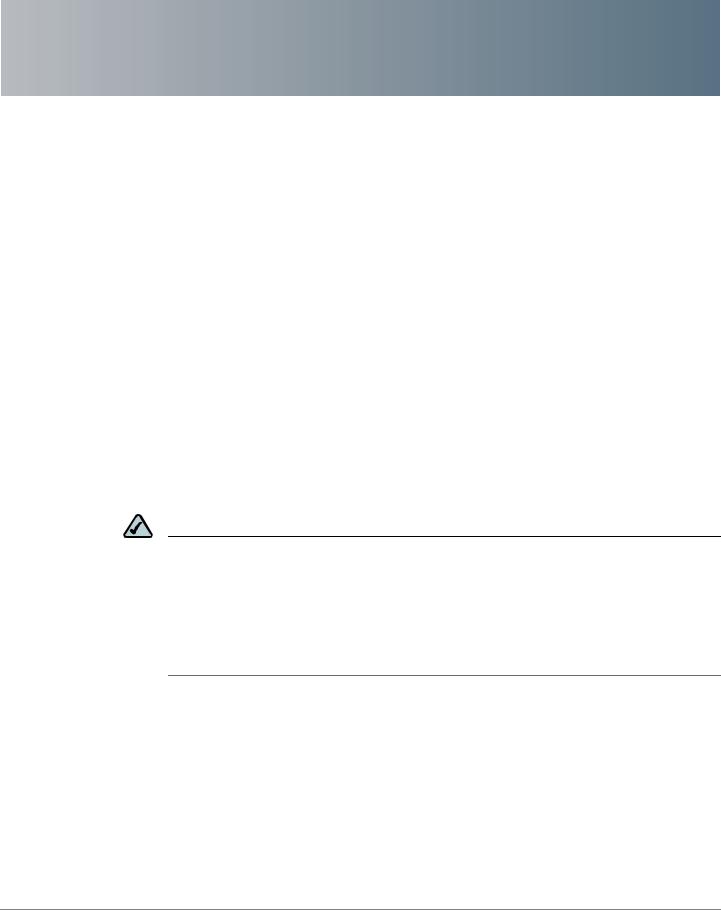
1
Getting Started
This chapter provides an overview of this document and basic information about your Cisco Small Business Pro IP phone. It contains the following sections:
•About This Document, page 1
•Overview of the Cisco Small Business Pro IP Phones, page 3
•Understanding Your Phone’s Lines and Buttons, page 4
About This Document
This guide describes the concepts and tasks necessary to use and configure your Cisco Small Business Pro IP Phone.
NOTE The Cisco Small Business Pro IP Phone features vary, depending on the type of call control system that you are using. This document describes using the Cisco Small Business Pro IP Phones with a SIP phone system, such as the Cisco SPA 9000 Voice System or a Broadsoft or Asterisk system. If you are using your Cisco Small Business Pro IP Phone with a Cisco Unified Communications 500 Series, see the
Cisco Unified Communications Manager Express for Cisco Small Business Pro IP Phone SPA 50X (SPCP) User Guide.
Cisco Small Business Pro IP Phone SPA 50X User Guide (SIP) |
1 |

Getting Started |
1 |
|
|
About This Document |
|
|
|
|
|
Organization
This table describes the contents of each chapter in this document.
|
Title |
Description |
|
|
|
Chapter 1 |
Getting Started |
A description of this book |
|
|
and an overview of the Cisco |
|
|
Small Business Pro IP |
|
|
Phones. |
|
|
|
Chapter 2 |
Installing Your Phone |
How to connect and install |
|
|
your phone. |
|
|
|
Chapter 3 |
Using Basic Phone |
How to perform basic phone |
|
Functions |
tasks, such as placing and |
|
|
answering calls, transferring |
|
|
calls, setting up call |
|
|
forwarding, and picking up |
|
|
calls. |
|
|
|
Chapter 4 |
Using Advanced Phone |
How to perform advanced |
|
Features |
phone tasks, such as |
|
|
configuring privacy and |
|
|
security features, speed |
|
|
dials, paging, and ring tones. |
|
|
|
Chapter 5 |
Using the Web Interface |
How to log in to and use the |
|
|
phone’s web user interface. |
|
|
|
Chapter 6 |
Using the Cisco SPA 500S |
How to use the Cisco SPA |
|
Attendant Console |
500S. |
|
|
|
Appendix A |
Where to Go From Here |
Lists of and links to related |
|
|
documentation. |
|
|
|
Cisco Small Business Pro IP Phone SPA 50X User Guide (SIP) |
2 |

Getting Started |
1 |
|
|
Overview of the Cisco Small Business Pro IP Phones |
|
|
|
|
|
Overview of the Cisco Small Business Pro IP Phones
The Cisco Small Business Pro IP Phones are full-featured VoIP (Voice over Internet Protocol) phones that provide voice communication over an IP network. The phones provide traditional features, such as call forwarding, redialing, speed dialing, transferring calls, conference calling and accessing voice mail. Calls can be made or received with a handset, headset or over a speaker.
IP phones also have special features not available in traditional phones. The Cisco Small Business Pro IP phones contain Ethernet ports, or ports that allow them to be linked to the computer network. They also have additional Ethernet ports that allow a computer to be connected to the network through the IP phone.
Unlike traditional phones, Cisco Small Business Pro IP phones require a separate power source. You can power the phones by connecting them to a switch that provides Power over Ethernet (PoE), or by using an optional PA100 power adapter.
The following table shows the Cisco Small Business Pro IP Phones covered in this document and their respective features:
|
SPA 501G |
SPA 502G |
SPA 504G |
SPA 508G |
|
SPA 509G |
|
|
|
|
|
|
|
Screen |
|
|
|
|
|
|
Paper labels |
128 X 64 monochrome LCD with backlight |
|
||||
|
|
|
|
|
|
|
Lines |
8 |
1 |
4 |
8 |
|
12 |
|
|
|
|
|
|
|
Softkeys |
4 fixed |
4 dynamic |
|
|
|
|
|
(redial, |
|
|
|
|
|
|
cancel, |
|
|
|
|
|
|
conference, |
|
|
|
|
|
|
and transfer) |
|
|
|
|
|
|
|
|
|
|
|
|
Navigation |
None |
Four-way navigation key |
|
|
|
|
Button |
|
|
|
|
|
|
|
|
|
|
|
|
|
Cisco Small Business Pro IP Phone SPA 50X User Guide (SIP) |
3 |

Getting Started |
1 |
|
|
Understanding Your Phone’s Lines and Buttons |
|
|
|
|
|
Understanding Your Phone’s Lines and Buttons
Use the following graphic and table to identify the parts of your phone.
Phone Components
Figure 1 Phone Components
The photo above shows the Cisco SPA 509G to illustrate the Cisco Small Business Pro IP Phone features. Other models differ. See the “Overview of the Cisco Small Business Pro IP Phones” section on page 3.
Numbered objects in the photo are explained in the following table.
# |
Phone Feature |
Description |
|
|
|
1 |
Handset |
Pick up to place or answer a call. |
|
|
|
2 |
Message Waiting |
Displays solid red when you have a new voice mail |
|
Indicator |
message. Flashes red during an incoming call. |
|
|
|
Cisco Small Business Pro IP Phone SPA 50X User Guide (SIP) |
4 |

Getting Started |
|
1 |
||
|
|
|
||
Understanding Your Phone’s Lines and Buttons |
|
|
||
|
|
|
|
|
|
|
|
|
|
|
|
|
|
|
# |
Phone Feature |
Description |
||
|
|
|
|
|
3 |
LCD Screen |
Displays date and time, phone station name, line |
||
|
|
|
extensions, and softkey options. (Not available on the |
|
|
|
|
Cisco SPA 501G.) |
|
|
|
|
|
|
4 |
Line keys |
Indicates phone line status. (Not available on the Cisco |
||
|
|
|
SPA 502G.) |
|
|
|
|
When lit: |
|
|
|
|
Green: Line is idle. |
|
|
|
|
Red (steady): Line is active or in use. |
|
|
|
|
Red (blinking): Line is on hold. |
|
|
|
|
Orange: Line is unregistered (cannot be used). |
|
|
|
|
These keys can also be programmed by your phone |
|
|
|
|
system administrator to perform functions such as |
|
|
|
|
speed dial, call pickup, or monitoring an extension. |
|
|
|
|
|
|
5 |
Softkey buttons |
Press a softkey button to perform the action shown on |
||
|
|
|
the label on the LCD screen above. |
|
|
|
|
Note: The Cisco SPA 501G has the following four |
|
|
|
|
buttons: |
|
|
|
|
Redial—Dials the last number called. |
|
|
|
|
Cancel—Cancels an action (such as a transfer). |
|
|
|
|
Conference—While on a call, press to start a |
|
|
|
|
conference call and dial another number. After |
|
|
|
|
the second party answers, press Conference |
|
|
|
|
again to create the conference. |
|
|
|
|
Transfer—Transfers a call. See the “Transferring |
|
|
|
|
Calls” section on page 31. |
|
|
|
|
|
|
6 |
Navigation button |
Press an arrow key to scroll left, right, up, or down |
||
|
|
|
through items shown on the LCD screen. (Not available |
|
|
|
|
on the Cisco SPA 501G.) |
|
|
|
|
|
|
7 |
Messages button |
Press to access voice mail (must be set up by your |
||
|
|
|
phone system administrator). |
|
|
|
|
|
|
8 |
Hold button |
Press to place a call on hold. |
||
|
|
|
|
|
Cisco Small Business Pro IP Phone SPA 50X User Guide (SIP) |
5 |

Getting Started |
1 |
|
|
Understanding Your Phone’s Lines and Buttons |
|
|
|
|
|
# |
Phone Feature |
Description |
|
|
|
9 |
Setup button |
Press to access a menu to configure features and |
|
|
preferences (such as your directory and speed dials), |
|
|
access your call history, and set up functions (such as |
|
|
call forwarding). |
|
|
For the Cisco SPA 501G, accesses the Interactive Voice |
|
|
Response menu, which allows you to perform tasks like |
|
|
getting the IP address of the phone. See the User Guide |
|
|
documents on Cisco.com for more information. (See the |
|
|
list of links at the end of this document.) |
|
|
|
10 |
Mute button |
Press to mute or unmute the phone. When phone is |
|
|
muted, the button glows red. A flashing mute button |
|
|
indicates the network connection cannot be found. |
|
|
|
11 |
Volume button |
Press + to increase the volume and - to lower the volume |
|
|
of the handset, headset, speaker (when the handset is |
|
|
off the phone, or ringer volume (when the handset is on |
|
|
the phone). |
|
|
|
12 |
Headset button |
Push to turn the headset on or off. When the headset is |
|
|
on, the button glows green. |
|
|
|
13 |
Speaker button |
Push to turn the speaker on or off. When the speaker is |
|
|
on, the button glows green. |
|
|
|
14 |
Keypad |
Use to dial phone numbers, enter letters, and choose |
|
|
menu items. |
|
|
|
Softkey Buttons
The softkey buttons on your phone display may vary depending on your phone model and the phone system setup. (Softkey buttons are not available on the Cisco SPA 501G.) Press the Right Arrow or Left Arrow keys on the navigation button to view additional softkey buttons.
Below is a partial listing of softkey buttons that may be available on your phone. You may not have all of these softkey buttons on your phone, and you may have additional buttons that are not listed here. For example, your phone administrator may also provide custom softkey buttons on your phone, such as buttons that provide a speed dial to a company number, or that access a specialized program that runs on your phone. Contact your phone administrator for more information.
Cisco Small Business Pro IP Phone SPA 50X User Guide (SIP) |
6 |

Getting Started |
1 |
|
|
Understanding Your Phone’s Lines and Buttons |
|
|
|
|
|
Button |
Function |
|
|
<< or >> |
Move left or right through an entry without deleting characters. |
|
|
activ |
Activates screen saver mode. |
|
|
add |
Add an entry. |
|
|
bXfer |
Performs a blind call transfer (transferring a call without speaking to the |
|
party to whom you are transferring the call.) |
|
|
cancel |
Cancels any changes you have made (press before ok or save). |
|
|
cfwd |
Forwards all calls coming to your phone to a specified number. |
|
|
-cfwd |
Clears call forwarding. |
|
|
conf |
Initiates a conference call. |
|
|
confLx |
Conferences active lines on the phone together. |
|
|
delChr |
Deletes the last number or letter. |
|
|
delete |
Deletes an entire item (for example, a number from the Call History list). |
|
|
dial |
Dials a number. |
|
|
dir |
Provides access to phone directories. |
|
|
dnd |
Do Not Disturb; prevents incoming calls from ringing your phone. |
|
|
-dnd |
Clears Do Not Disturb. |
|
|
edit |
Opens an item so that you can edit numbers or letters, or enable or |
|
disable a feature. |
|
|
grPick |
Allows you to answer a call ringing on an extension by discovering the |
|
number of the ringing extension. |
|
|
ignore |
Ignores an incoming call. |
|
|
lcr |
Dials the Last Call Received. |
|
|
miss |
Shows the Missed Calls list. |
|
|
park |
Puts a call on hold at a designated “park” number. The call is parked on |
|
the line until you unpark it or the caller disconnects. Must be configured |
|
by your phone system administrator. |
|
|
Cisco Small Business Pro IP Phone SPA 50X User Guide (SIP) |
7 |

Getting Started |
1 |
|
|
Understanding Your Phone’s Lines and Buttons |
|
|
|
|
|
Button |
Function |
|
|
pickup |
Allows you to answer a call ringing on another extension by entering the |
|
extension number. |
|
|
phold |
Puts a call on hold on an active shared line. |
|
|
redial |
Displays a list of recently dialed numbers. |
|
|
resume |
Resumes a call that is on hold. |
|
|
save |
Saves your changes. |
|
|
select |
Selects the highlighted item on the LCD screen. |
|
|
starcode |
Allows you to enter a star code. See “Using Star Codes,” on page 60. |
|
|
unpark |
Resumes a parked call. |
|
|
xfer |
Performs a call transfer. |
|
|
xferLx |
Transfers an active line on the phone to a called number. |
|
|
y/n |
Enters a submenu and when pressed, toggles between Yes or No to |
|
enable or disable an option. |
|
|
Using Keypad Shortcuts
When using the phone menus, you can use the keypad to enter the number shown next to the menu or sub-menu item on the LCD screen. (Not applicable to the Cisco SPA 501G.)
For example, to obtain your IP address on the Cisco SPA 504G, press the Setup button and dial 9.
The IP address is displayed on the Network screen.
Cisco Small Business Pro IP Phone SPA 50X User Guide (SIP) |
8 |
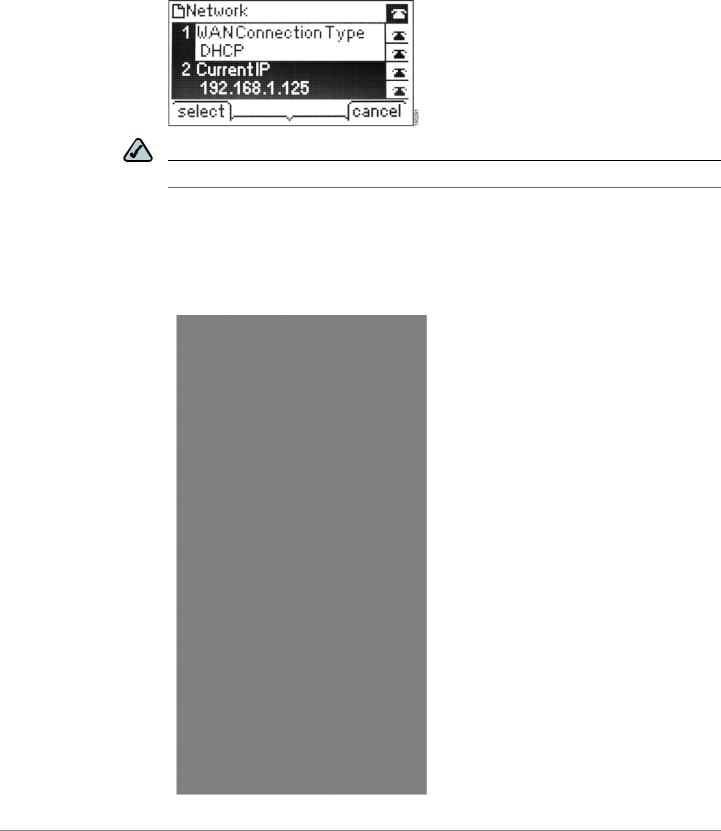
Getting Started |
1 |
|
|
Cisco SPA 500S Attendant Console |
|
|
|
|
|
NOTE Menus and options vary depending on phone model.
Cisco SPA 500S Attendant Console
Cisco Small Business Pro IP Phone SPA 50X User Guide (SIP) |
9 |

Getting Started |
1 |
|
|
Caring for Your Phone |
|
|
|
|
|
The Cisco SPA 500S is a 32-button attendant console for the Cisco Small Business Pro IP phones, providing 32 three-color (red, green, and amber) programmable LEDS, with support for Broadsoft Busy Lamp Field and Asterisk Line Monitoring. The Cisco SPA 500S attaches to the IP phone with the attachment arm provided (not shown). It obtains power directly from the IP phone and does not require a separate power supply. Two Cisco SPA 500S units can be attached to a single IP phone to monitor a total of 64 separate lines. For more information on the Cisco SPA 500S, see Chapter 6, “Using the Cisco SPA 500S Attendant
Console.”
Caring for Your Phone
The Cisco Small Business Pro IP phones are electronic devices that should not be exposed to excessive heat, sun, cold or water. To clean the equipment, use a slightly moistened paper or cloth towel. Do not spray or pour cleaning solution directly onto the hardware unit.
Cisco Small Business Pro IP Phone SPA 50X User Guide (SIP) |
10 |

2
Installing Your Phone
This chapter describes how to install your Cisco Small Business Pro IP Phone and connect it to your network. It contains the following sections:
•Before You Begin, page 12
•Phone Connections, page 12
•Connecting the Handset, page 13
•Installing the Stand (Optional), page 13
•Mounting the Phone to the Wall (Optional), page 14
•Connecting the Power, page 19
•Connecting Your Phone to the Network, page 20
•Connecting a PC to Your Phone (Optional), page 21
•Connecting Wired and Wireless Headsets (Optional), page 21
•Verifying Phone Startup, page 22
•Upgrading Your Phone’s Firmware, page 23
Cisco Small Business Pro IP Phone SPA 50X User Guide (SIP) |
11 |
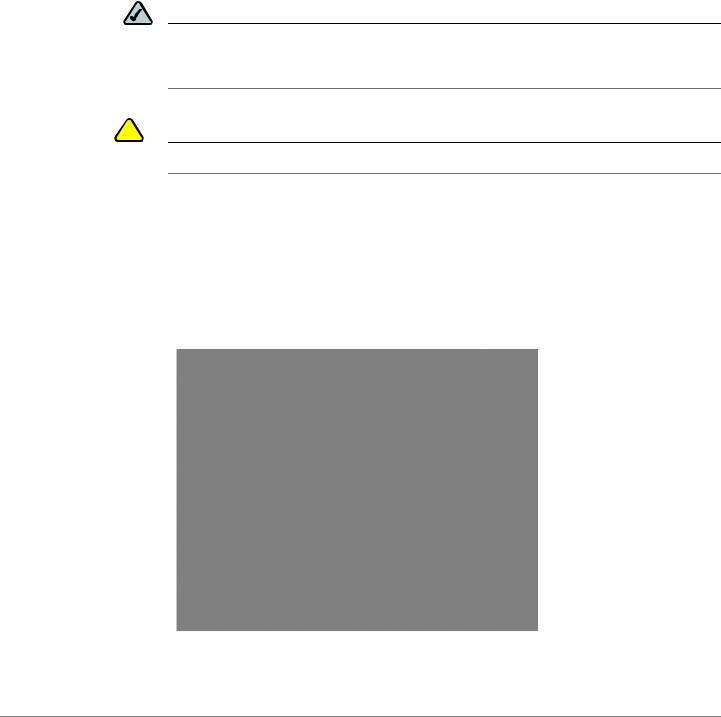
Installing Your Phone |
2 |
|
|
Before You Begin |
|
|
|
|
|
Before You Begin
Before you install and connect your phone, verify with your System Administrator (if applicable) that the network is ready for the phone, read the safety notices, and make sure you have all the phone parts and documentation available.
NOTE The RJ-11 port marked “AUX” is reserved for connection with the Cisco SPA 500S Attendant Console that works with the IP phones. It is not for use as a telephone line port.
!
CAUTION CAUTION: Do not plug a telephone line cord into the port marked “AUX.”
Phone Connections
The following photo shows where you need to connect parts of the phone.
Figure 1 Phone Connections
Cisco Small Business Pro IP Phone SPA 50X User Guide (SIP) |
12 |
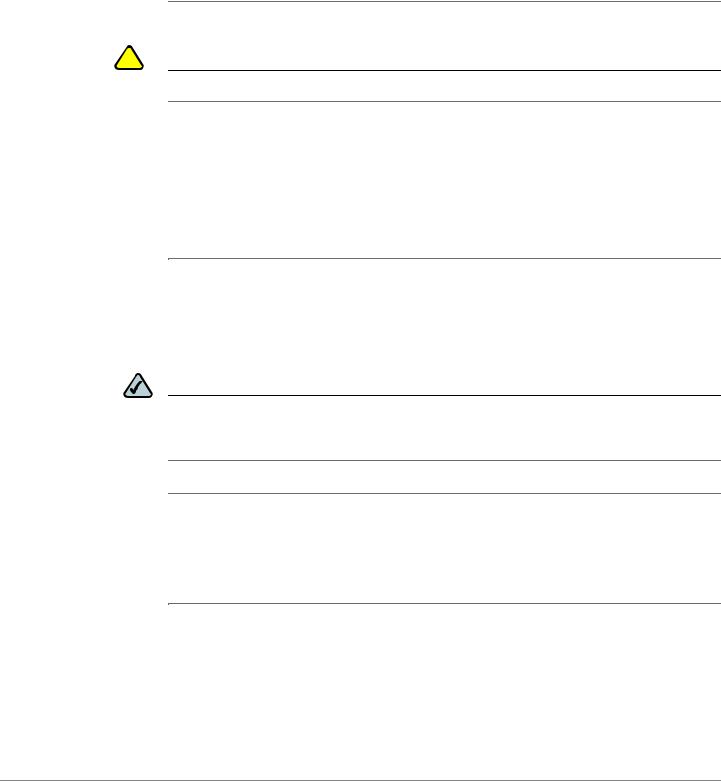
Installing Your Phone |
2 |
|
|
Connecting the Handset |
|
|
|
|
|
Connecting the Handset
STEP 1 Turn the phone body over to expose the ports on the back of the unit.
!
CAUTION Do not insert a telephone line cord into the auxiliary port.
STEP 2 Insert the long end of the phone cord into the handset port on the phone body that is marked with a phone symbol.
STEP 3 (Optional) Route the phone cord through the cable slot.
STEP 4 Insert the other end of the phone cord into the port at the bottom of the handset (not shown).
Installing the Stand (Optional)
NOTE Do not attach the desk stand if you want to mount the phone to the wall. If you are attaching a Cisco SPA 500S attendant console, attach the console before attaching the desk stand.
STEP 1 Connect the phone stand by lining up the tabs on the stand with the slots on the phone body.
STEP 2 Slide the bottom tabs into the lower slots on the phone body and lightly press down on the stand. It should easily slide into the upper stand slots. Do not force.
Cisco Small Business Pro IP Phone SPA 50X User Guide (SIP) |
13 |

Installing Your Phone |
2 |
|
|
Mounting the Phone to the Wall (Optional) |
|
|
|
|
|
Mounting the Phone to the Wall (Optional)
To mount the phone to the wall, you must purchase the MB100 wall mount bracket kit.
Figure 2 MB100 Wall Mount Kit
Cisco Small Business Pro IP Phone SPA 50X User Guide (SIP) |
14 |

Installing Your Phone |
2 |
|
|
||
Mounting the Phone to the Wall (Optional) |
|
|
|
|
|
|
|
|
|
|
|
STEP 1 To attach the Mounting Bracket (MB), align the two cleats on the MB with the holes in the phone’s base.
STEP 2 Orient the MB such that the phone’s Ethernet and handset ports are accessible after installation.
STEP 3 Push the MB onto the phone’s base. Slide the MB upwards to lock it in place.
Cisco Small Business Pro IP Phone SPA 50X User Guide (SIP) |
15 |

Installing Your Phone |
2 |
|
|
Mounting the Phone to the Wall (Optional) |
|
|
|
|
|
STEP 4 (Optional) If a Wi-Fi or PoE dongle is installed, place in the tray.
Cisco Small Business Pro IP Phone SPA 50X User Guide (SIP) |
16 |

Installing Your Phone |
2 |
|
|
Mounting the Phone to the Wall (Optional) |
|
|
|
|
|
Plug in the Ethernet and power cables.
Cisco Small Business Pro IP Phone SPA 50X User Guide (SIP) |
17 |
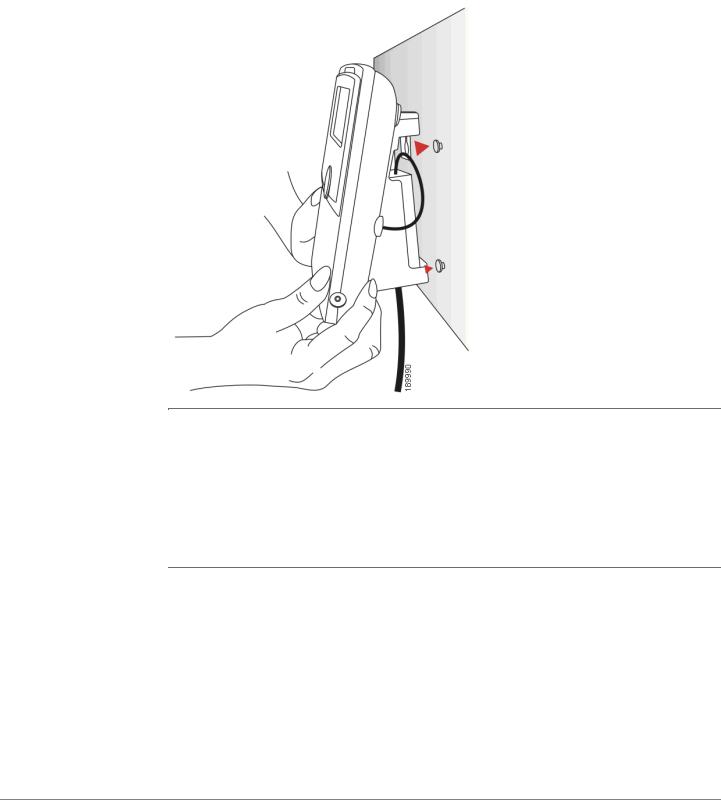
Installing Your Phone |
2 |
|
|
Mounting the Phone to the Wall (Optional) |
|
|
|
|
|
STEP 5 Hang onto screws mounted in the wall.
Reversing the Handset Retention Tab
If you mount the phone to a vertical surface, you must reverse the handset retention tab on the phone body so that the handset does not fall off the phone when it is placed on the cradle.
STEP 1 Push the latch in.
STEP 2 Slide the retention tab up until it detaches from the phone.
Cisco Small Business Pro IP Phone SPA 50X User Guide (SIP) |
18 |

Installing Your Phone |
2 |
|
|
Connecting the Power |
|
|
|
|
|
STEP 3 Rotate the tab 180° and re-insert into the phone base. The tab now catches the slot in the handset when the handset is placed onto the cradle.
Connecting the Power
If you are using an external power source, insert one end of the power cord into an outlet and insert the other end of the power cord into the power port on the phone body.
Cisco Small Business Pro IP Phone SPA 50X User Guide (SIP) |
19 |

Installing Your Phone |
2 |
|
|
Connecting Your Phone to the Network |
|
|
|
|
|
Connecting Your Phone to the Network
If you are using an Ethernet connection:
STEP 1 Insert one end of the Ethernet cable into the network port on the phone body marked “SW.”
STEP 2 Insert the other end of the Ethernet cable into the appropriate device, such as a network switch, on your network.
Connecting the Phone to the Wireless Network
You can use the Cisco WBP54G Wireless-G Bridge for Phone Adapters to connect the IP phone to a Wireless-G network instead of the wired local network.
NOTE This procedure requires the optional Cisco SPA 9000 Voice System IP Phone PA100 power adapter to provide power to the WBP54G.
To connect your phone to the Cisco WBP54G:
STEP 1 Configure the Cisco WBP54G using the Setup Wizard. See the instructions in the
Wireless-G Bridge for Phone Adapters Quick Installation Guide, available on cisco.com. See Appendix A, “Where to Go From Here,” for a list of documents and locations.
STEP 2 During the Setup Wizard process, connect the Ethernet network cable of the WBP54G to the back of the IP phone base station into the slot marked “SW.” See the “Phone Connections” graphic.
STEP 3 Connect the power cable of the WBP54G to the power port on the IP phone base.
STEP 4 Plug the IP phone power adapter into the power port of the WBP54G.
STEP 5 Plug the other end of the IP phone power adapter into an electrical outlet.
Cisco Small Business Pro IP Phone SPA 50X User Guide (SIP) |
20 |

Installing Your Phone |
2 |
|
|
Connecting a PC to Your Phone (Optional) |
|
|
|
|
|
Connecting a PC to Your Phone (Optional)
To connect a PC to your phone (optional):
STEP 1 To provide network access to a PC, connect one end of an additional Ethernet cable (not provided) to the PC port on the back of the phone body. See the
“Phone Connections” graphic.
STEP 2 Connect the other end of the Ethernet cable to the network port on your PC.
Connecting Wired and Wireless Headsets (Optional)
The IP phones support headsets from different manufacturers. For the latest supported models, contact your reseller. Additional information can be found at the manufacturer’s websites:
http://www.plantronics.com
http://www.jabra.com
Each brand and type of headset may require different steps for connection. Consult the documentation for your particular headset for more information. In general, to connect a headset:
•Wireless—Connect the headset’s telephone cord into the telephone port on the back of the IP Phone.
•Wired headsets—Connect the 2.5mm connector from the headset into the headset port on the right side of the IP phone as shown in the following graphic:
Cisco Small Business Pro IP Phone SPA 50X User Guide (SIP) |
21 |

Installing Your Phone |
2 |
|
|
Verifying Phone Startup |
|
|
|
|
|
Verifying Phone Startup
After receiving power and network connectivity, the phone executes a boot-up sequence. During this sequence, phones with screens display the Cisco logo and then “Initializing Network”. All of the lights on the phone will flash.
After your phone is successfully connected to the network and receives a basic configuration, your phone line keys should glow green (on models with phone line keys).
On models with screens, the phone displays the standard menu for the phone. The date, name and number of the phone display on the top line of the LCD screen. At the bottom of the LCD screen, softkeys are displayed over their associated soft buttons.
On models with no screen, such as the Cisco SPA 501G, the lines should glow green and you should hear a dial tone when picking up the handset or pressing the speakerphone button.
Cisco Small Business Pro IP Phone SPA 50X User Guide (SIP) |
22 |
